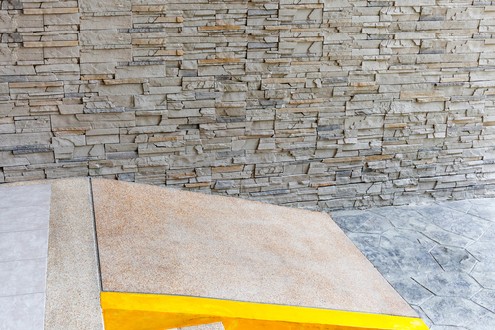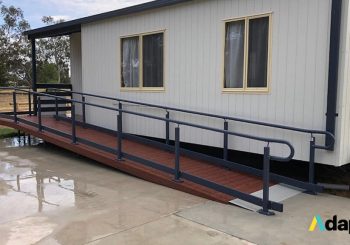Poorly designed disability ramps pose severe risks to the user and as well as caregivers.
After conducting thorough research online, you may have considered getting a wheelchair ramp installed on your property. It’s crucial that you make a well-informed decision in such situations, as there is a wide range of products available in the market. There are two categories of ramps, they include:
Aspects to keep in view while planning a ramp with steps in the feature
1. Permanent Ramps
The critical aspect to keep in mind while getting a permanent ramp installed is to ensure that it’s in accordance with local building codes. Regardless of whether it’s being constructed on a commercial or residential property, you need to have a permit. These ramps are assembled and built on-site. Here are a few common issues with permanent ramps:
- At times that have uneven or steep slopes.
- They can have improperly supported slopes
- They may not necessarily have side barriers or railings
2. Portable Ramps
Portable ramps are set up specifically to ensure that they can be removed once they have been used. However, these features have to follow DDA guidelines as well. Here are a few common issues that come with temporary ramps:
- The length of the slope is generally short, which results in steep slopes.
- Instability
- As a result of improper anchoring, these ramps can slip off from platforms like porches or entrances.
No matter the types of feature, it’s crucial to ensure that they are firm, stable, and slip-resistant. The one way to ensure you get a safe and well-designed ramp is to hire experienced operators for the job. Before settling on a final decision, it’s essential to have accurate information on the different ramp products and their advantages and disadvantages.
Essential Aspects to Bear in Mind
Here are a few key aspects to keep in mind while having a wheelchair ramp installed:
- Rise – Every wheelchair ramp should ideally have one foot of surface for a rise of 2″. However, there are specific power wheelchairs that have a fixed incline that they can climb. It is the user’s job to determine whether the ramp is safe for use.
- Length – Based on your specific requirements and the layout of your property, you can get a ramp of any length constructed. However, the rise of a single section should not exceed 30″. A slope that exceeds this length should have a levelled landing area as a resting space.
- Width – A wheelchair ramp should ideally have a width of 36″ as it is perfect for accommodating wheelchair devices and walker users. In case your wheelchair ramp is wider than average or has an accessory attached to it, consider getting a wider ramp installed.
- Maintenance – This is another crucial aspect that has to be taken into account during the planning phase. Make sure that the material used to construct the ramp can endure climatic changes, and is easy to maintain.
Besides the points mentioned above, it is also essential to take future needs into account. For example, if there’s a possibility there would be a change of requirement in the future, it’s vital to consider that aspect as well.
Based on the information you provide, the ramp experts will recommend products that suit your specific needs. Our team will make sure that the feature is designed to suit your needs and the available space.
We offer a wide variety of ramp layouts and options. You can call 1800 232 1800 or contact Adapta through this form, and one of our representatives will contact you shortly.



